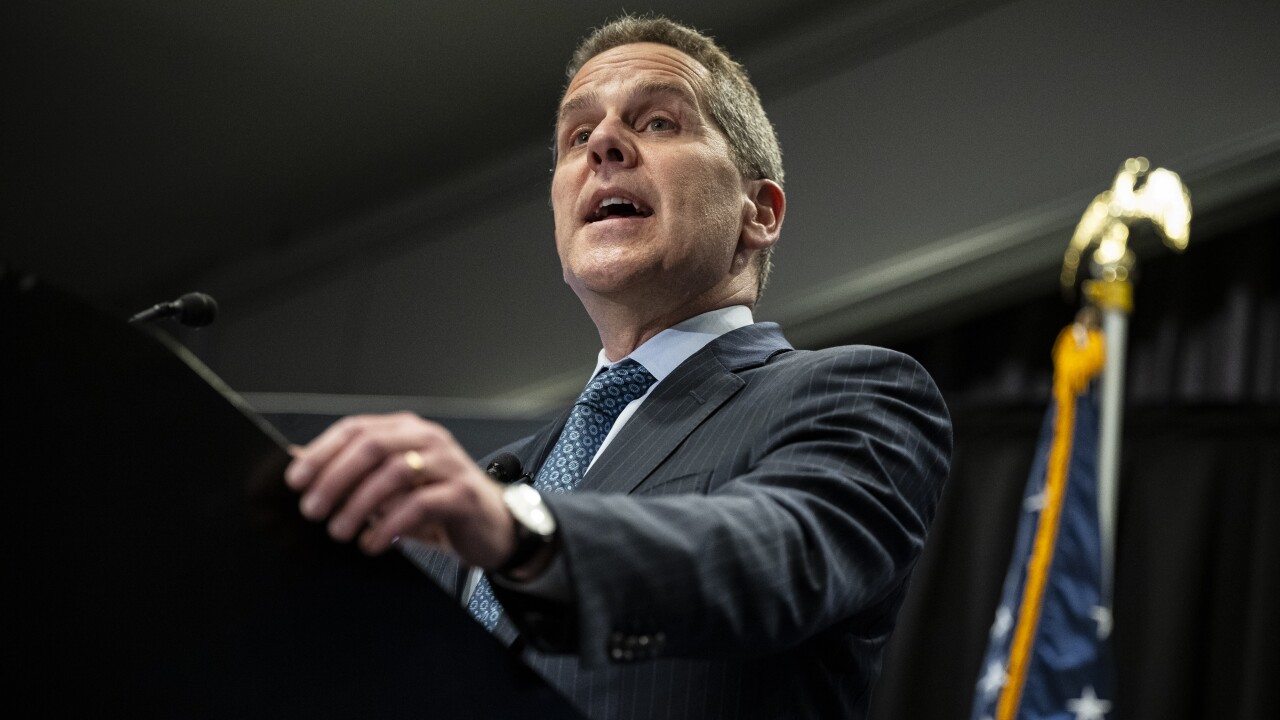-
The reverse mortgage business is an industry in flux: volume has been declining, while regulatory scrutiny is just getting ramped up. While that has driven some big names from the stage, smaller banks are sensing opportunity.
August 1
As regulators banish an array of mortgage products deemed unsuitable for typical borrowers, it's ironic that the government serves as the principal backstop for reverse mortgages a business targeted to aging seniors and dominated by nonbank lenders.
And to add insult to injury, the insurance fund behind this program is technically underwater by nearly $3 billion. With
It is time that policymakers reconsider the social value in subsidizing a mortgage program that appears inconsistent with the direction of mortgage policy for the vast majority of the population.
The market for reverse mortgages is small compared to the overall mortgage market. In 2011, about 70,000 reverse mortgages were originated, with the vast majority insured under the FHA's Home Equity Conversion Mortgage program. Such products were designed to provide seniors with an ability to convert the equity they built in their home over the years into a supplemental income stream. The borrower could remain in their home as long as they wanted and so in concept the product provided a way for elderly homeowners to monetize their home equity.
In recent years, a number of troubling trends in borrower preferences, product evolution and market composition exposed taxpayers to losses and seniors to potentially higher costs and a bewildering array of options that can adversely affect their financial condition years later.
One such trend is the exit from the industry in 2011 and 2012 by the three largest reverse mortgage lenders, Wells Fargo, Bank of America and MetLife. As a result, the reverse mortgage market is dominated by mortgage brokers, correspondent lenders and other nonbank entities. One lesson learned during the housing boom was that loans underwritten by third-party originators rather than retail lenders performed much worse due to significant process and control weaknesses and a lack of skin in the game.
Moreover, the basic reverse mortgage has undergone significant change, offering borrowers a number of options regarding loan terms such as fixed- versus adjustable-rate and amount of draw at closing, among others. Increasingly borrowers are taking a lump sum rather than a periodic stream of payments which according the Consumer Financial Protection Bureau could create serious financial hardship later on for these borrowers as it eliminates a principal financial backstop should the borrower need funds for long-term care or other needs. Today, 75% of all reverse mortgage borrowers are taking at least 90% of the cash out of their home at closing, according to CFPB.
With debt burdens rising for seniors, cashing out their equity as soon as they turn 62 is as enticing as taking out an option adjustable-rate mortgage with a piggyback second must have been when these borrowers were in the 50s.
Indeed, the so-called exotic mortgages, which laid waste to many borrowers after the crisis due to poor consumer disclosures, and which permitted equity extraction as long as home prices were rising, bear similarities to the reverse mortgage products today.
Interest accrual increases loan balances, which can in some cases wind up exceeding the value of the home effectively producing negative amortization similar to option ARMs. While reverse mortgage borrowers typically do not have to pay back any loan balances that exceed the value of the house, a picture nonetheless emerges of a loan product with a number of complex features that can confuse borrowers. Compound that product complexity with a market largely made up of nonbank firms and increasing debt burdens for retirees and you have the recipe for a mortgage that is at odds with the direction of the rest of the market as far as consumer protection is concerned. The CFPB issued a
At the same time, the government's involvement in reverse mortgages through its HECM program has encountered significant economic headwinds. Although its economic losses of $2.8 billion are much lower than the rest of FHA's insurance fund, as a percent of loan balances, the HECM program has a capital ratio of negative 3.58%, even worse than negative 1.44% for FHA's flagship single family business.
Reverse mortgages have largely stayed out of the limelight in mortgage reform as more immediate attention was given to products contributing to the crisis. With 10,000 baby boomers turning 65 each day
Clifford Rossi is the Executive-in-Residence and Tyser Teaching Fellow at the Robert H. Smith School of Business at the University of Maryland.





